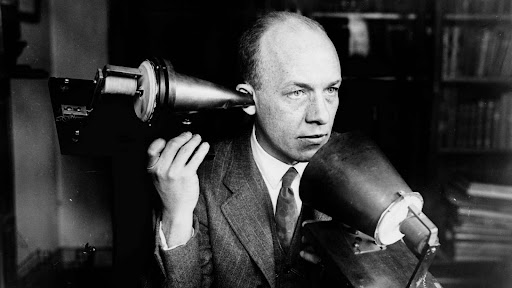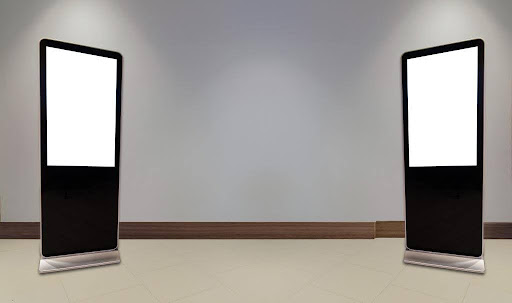Let’s take a trip down memory lane and explore the fascinating world of microphone technology! In 1876, Alexander Graham Bell wowed us all with his invention of the telephone, which used a simple carbon microphone to transmit sound. But that was just the beginning! From there, microphones have come a long, long way.
From humble carbon microphones to dynamic, condenser, ribbon, and digital microphones, each has its unique set of perks and quirks. So get ready to dive into the evolution of microphones and see just how far they’ve come!
Table of Contents
The Early Days of Microphone Technology
The carbon microphone, invented around 1878 in England by David Edward Hughes, was one of the first microphones. In the United States, Thomas Edison and Emile Berliner were also working on the carbon microphone around the same time.
Carbon microphones were simple devices with a metal diaphragm encasing a small amount of carbon granules. To generate a current flow through the microphone, external power is applied. When sound waves strike the microphone’s diaphragm, the diaphragm vibrates and exerts fluctuating pressure on the carbon granules. These fluctuating pressure levels are transformed into changing resistance levels, affecting the electrical current passing through the microphone. These electrical signals were sent over the phone line and converted to sound at the receiving end.
The early days of microphone technology were all about the humble carbon microphone! These microphones were like the OG’s of sound-to-electrical signal conversion and were super popular because they were easy to use and budget-friendly. You could find them in early telephones, radio broadcasts, and public address systems.
Sure, carbon microphones had their fair share of quirks, like the so-so sound quality and being a little picky about their surroundings (temperature and humidity could affect their performance). But despite all that, they still managed to reign supreme for many years and played a vital role in the evolution of microphone tech.
The Advent of Condenser Microphones
The condenser microphone, invented by EC Wente of Western Electric in 1916, was the next breakthrough in microphone technology.
A condenser microphone comprises a charged diaphragm and a metal plate that combine to convert sound waves into electrical signals. Condenser microphones, unlike dynamic microphones, were powered by an external power source, typically a battery or phantom power supply, allowing the diaphragm to be charged.
Because of their increased sensitivity, condenser mics are ideal for recording studios, podcasts, or ASMR, where capturing the slightest details is critical. Compared to dynamic microphones, the metal plate and charged diaphragm provided a much more precise and accurate representation of sound.
The Invention of Dynamic Microphones

The first moving coil microphone, also known as the dynamic microphone, was invented in 1923.
Dynamic microphones convert sound into an electrical signal using a magnetic coil and diaphragm, making them durable and dependable.
Dynamic microphones generate an electrical signal by utilizing a magnetic field. The microphone’s diaphragm would vibrate in response to sound waves, causing a magnetic coil within the magnetic field to move. This movement would generate an electrical signal that corresponded to the sound being recorded.
Dynamic microphones’ improved durability and dependability made them the preferred choice for radio broadcasting, as they could withstand the demands of live broadcasts while providing consistent, high-quality sound. For many years, dynamic microphones were the standard for radio broadcasting due to their affordability and ease of use. In fact, the standard microphone for the BBC studios in London was the Marconi-Sykes magnetophone, which was introduced in May 1923.
Dynamic microphones were widely used for various other applications, including live performances, public speaking, recording, and radio broadcasting.
The Development of Ribbon Microphones
Harry F. Olson invented the ribbon microphone in the same year the moving coil dynamic microphone was invented.
Unlike other microphones that used carbon granules or a magnetic coil and diaphragm, the ribbon microphone captured sound waves and converted them into electrical signals by suspending a thin metal ribbon in a magnetic field.
Ribbon microphones could capture subtle nuances in sound thanks to this technology, making them ideal for recording classical music and other types of audio that require high levels of accuracy.
Ribbon microphones’ warm, natural sound was highly sought after by musicians and recording engineers who recognized the potential of this new technology. As a result, ribbon microphones quickly gained popularity and became a staple in recording studios, where they were used to create some of the twentieth century’s most iconic recordings.
The Rise of Digital Microphones

In 2003, the engineers at Georg Neumann GmbH created the world’s first digital microphone. These microphones changed the game regarding recording, processing, and sending audio. They’re now the go-to choice for modern recording studios, live performances, and broadcasts, replacing the old-fashioned analog microphones.
Digital microphones convert sound into a digital format using an analog-to-digital converter to easily save and edit audio on a computer. They also let you record from remote locations by wirelessly sending a digital signal.
Not only do digital microphones provide top-notch recording quality and flexible formats, but you can also tweak and enhance the sound using post-processing software. And because they don’t degrade the signal or add noise, they’re way more accurate and reliable than analog microphones.
Thanks to digital microphones, there are now tons of unique products and applications for recording and processing sound, opening up endless possibilities.
The Future of Microphone Technology
The future of microphone technology is highly optimistic. Numerous advancements in digital signal processing and design allow for the development of better microphones that can capture sound with greater accuracy and clarity.
Two of the most prominent emerging microphone technology trends are 3D audio and smart microphones. 3D audio enhances the immersive quality and realism of sound for listeners. and smart microphones have the ability to adjust their settings automatically based on the environment and the sound being captured. These advancements have the potential to significantly impact the future of sound recording and processing technology.
Conclusion
Finally, the evolution of microphone technology has been an exciting and long journey. Microphone technology has advanced significantly over the years, from simple carbon microphones used in early telephones to high-tech digital microphones used today. Today, a wide variety of microphone types are available, each with its own set of capabilities and limitations.
There is a microphone out there that is perfect for your needs, whether you are podcasting, live streaming, producing videos, or creating ASMR content. The future of microphone technology appears bright, with new and improved microphones on the horizon that will provide greater accuracy, versatility, and immersion.





